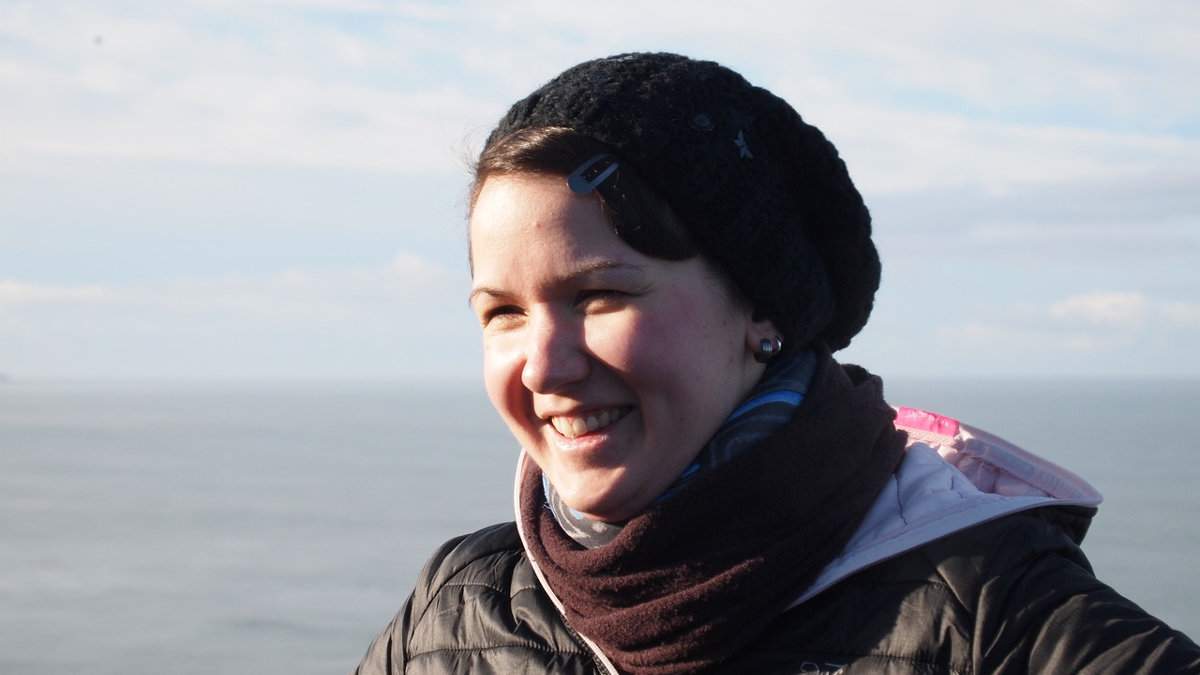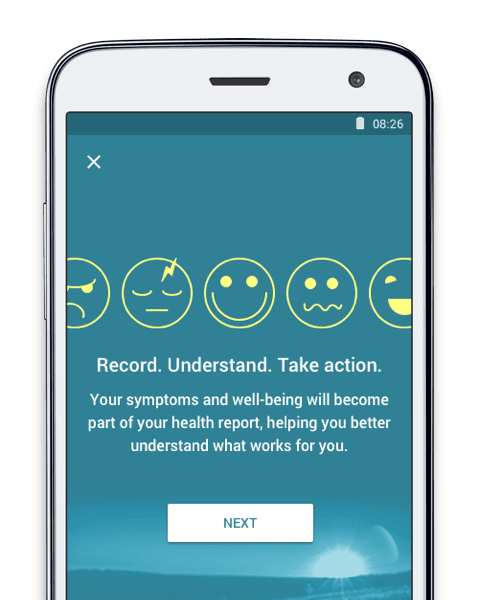When you consider the prevalence of all rare diseases combined, the term becomes something of a misnomer. 1 in 10 Americans – 30 million – live with one of the diseases that fall into the category. That is roughly the number of people living with diabetes. Worldwide, an estimated 350 million people live with a rare disease, more than HIV, thyroid conditions, and Alzheimer’s disease combined. Yet of the 6,000-7,000 rare diseases estimated to exist, 95% have zero FDA-approved drugs. Today is the tenth year that the final day of February marks Rare Disease Day, an opportunity for organizations worldwide to raise awareness of these conditions, encourage research, and bring the needs of those living with rare diseases to the attention of decision and policy makers.
Karina Sturm is a German native who lives with Ehlers-Danlos syndrome, an umbrella term for a group of 13 different connective tissue disorders. Her story, her fight for answers, and her frustration will be familiar to many living with rare diseases. To help support Rare Disease Day, Karina has been kind enough to share her story with us.
A guest post by Karina Sturm
What the hell am I doing here? I asked myself while sitting on a plane from Frankfurt to Boston. I had never flown before and was scared to death. At the same time, I hoped to finally find the help I needed. In 2014, I decided to leave Germany behind and see specialists in the US.
In 2010, I had developed a mysterious illness. After some harmless injections into my neck joints that were supposed to relieve my tension headaches, my whole body fell apart. Right after the injections, my face became numb, my arms and legs weak, and my breathing was off. I almost died. I was sent to all kinds of specialists, and none could explain what had happened to me.
My Life Turned Upside Down
Weeks over weeks I couldn’t do anything besides lying on my couch. My neurological issues developed further, and there was almost no moment in which I saw clearly or could walk without falling. I was scared and thought I had to die. With every movement I made, my neck cracked, which led to blurred vision and numbness in my throat. I was unable to continue working in my job as a research associate, which I had just started a year earlier. While I thought I could build a career and a family now, my body decided otherwise.
When I told my neurologist about my worries, the diagnosis was evident to her. She said: “Ms. Sturm, you are suffering from a psychosomatic illness. This is all in your head. There is nothing wrong with your spine or your body.” She did not order any tests or look at my spine.
I Started Doubting Myself
In the past, I could always trust my gut, but now, I wasn’t so sure. Could I have imagined all my neurological issues? On the one hand, I was sure that I had no psychological illness, but on the other side, she was a neurologist. Shouldn’t she know what I am suffering from? No, I knew what I felt, and that those symptoms were physical.
I picked up the pieces and fought back.
Shocked and frustrated by the ignorance of my doctor, I went home and started to research myself. It took six months until I was finally diagnosed with multiple cervical spine instabilities, which were causing my severe neurological issues. Consequently, I had to follow a strict physical therapy protocol. My life became dominated by appointments.
Gradually, I had to give up my job, my apartment, my boyfriend, and playing volleyball. With every part of my life that I had to give up, I lost a piece of myself as well. I wasn’t even sure who I was anymore. There was nothing I could define myself over, and many friends couldn’t handle my new self. Since I didn’t even know what I had become, how could I expect them to know?
Other guest posts featured on the MyTherapy blog:
- Life with Multiple Sclerosis and a Chronic Headache: Robert’s Story
- Traveling with MS: My Journey from America to Bali - Part One of Two
Nothing Worked
When all the therapies I tried failed, and my condition worsened further, I became very frustrated and ugly to the people around me. I wanted to give up. Three years filled with daily physical therapy and pain had led to more instabilities in joints all over my body. Now, not only my cervical spine was affected, but also my hips, shoulders, lower back, knees and more. How could this happen? I exercised to become stronger, and not to have more damaged joints.
I had seen over 50 doctors in just four years and contacted even more via e-mail. Some just picked up the psychosomatic diagnosis of my first neurologist, others plainly stated I was too complicated, and they didn’t have the time to deal with me. On top of my medical issues, I argued with German insurances regarding financial support, medical treatments that were not covered by health insurance. Basically, every day offered a new fight for me.
Leaving Germany Behind for the USA
Four years were enough, I thought. It was time to cross borders and search for help outside of Germany. So, I packed my suitcase, emptied my savings account, and hopped on a plane to travel to the US. First, I tried an experimental treatment for my neck instabilities - my last hope to fight my severe instabilities. And again, it failed. Contrary to all German doctors I had seen until 2014, my American physician was sure: “Karina, you are clearly suffering from an underlying disease that affects your connective tissue. I cannot do anything for you.” He suggested a neurosurgeon I should see, while I was in the US.
Salvation
I took another plane and flew to Maryland. My neurosurgeon talked to me for two hours and examined all my joints. At the end of my appointment, he stated: “I am certain that you, Ms. Sturm, are suffering from Ehlers-Danlos syndrome, and consequently suffer from severe cervical spine, and other joint instabilities.” I was shocked and relieved at the same time. Shocked, because not it was clear that I would never become healthy again. All the hope I had during those years that I would overcome those instabilities with consequent training, were gone. Relieved, because finally someone believed me, and I knew why I had all the symptoms. From now on, I could stop looking behind. I was finally able to accept my condition, look into my future as a chronically ill patient. I would be happy again, and I would find ways to fill my life with a meaningful purpose!
This was not the end; it was a new beginning!
Directing My Passion
I have been writing for over 20 years of my life. What started as diary and story writing, developed itself further. Soon a bilingual blog and book articles led to my own small online magazine and autobiography.
I am living between two continents, with several rare and chronic diseases, and switched from being a research associate to a chronically ill patient. Due to my disability, I had to give up my work in research. However, I still wanted to use my passion for medicine, which ultimately led me to write articles about my medical conditions, my way to diagnosis, and the fate of other patients just like me.
Combining my expertise as a research associate with my own experiences helped me to grow as a writer and also as a human being. Using my journalistic work, I want to give a voice to those who otherwise often remain invisible: people with chronic conditions and disabilities. In addition, I focus on rather “unpopular” illnesses and unfairness in our social system and try to contribute to a better understanding and tolerance between the chronically ill and healthy people.
At this point, I am suffering from 15 chronic conditions, all related to Ehlers-Danlos syndrome, and the only way I can cope with my life is by writing about it.
Looking Ahead
I started my blogs and wrote books because I wanted to share my way with the world. I was hoping to raise awareness for my conditions. Hopefully in the future doctors will become more open about Ehlers-Danlos syndrome, specialized centers will be built, and health insurances will allow doctors to invest more time in chronically ill patients. Overall, I wish for EDS patients to be diagnosed earlier, so they can get the help they need before permanent damage occurs.
And, ultimately, I wish that all people would become more tolerant regarding invisible and rare illnesses.
We would like to thank Karina for sharing her story with us.
If you would like your story featured on the MyTherapy blog, contact Dan here.
If you found Karina’s story insightful, you may like to read other guest posts:



